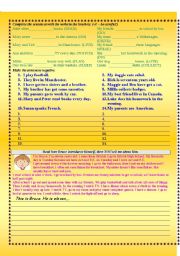
|
Present simple 2
Present simple: daily routine, hobbies; writimg;
Level: elementary
Age: 10-12
Type: worksheet
Downloads: 2
|
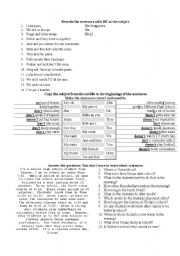
|
Present simple
3rd person singular, compared to others
Level: elementary
Age: 10-12
Type: worksheet
Downloads: 3
|
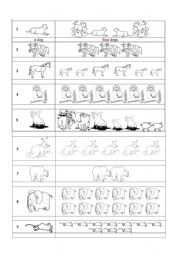
|
Plural, animals
A very easy but useful worksheet on basic vocabulary and the phrases .
I use this worksheet with the youngest students sometimes to:
- point out the �s for plural
- point out that we usually use �I like / I don�t like� with nouns in plural
Level: elementary
Age: 7-9
Type: worksheet
Downloads: 6
|
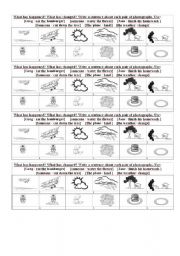
|
Present perfect B
A short worksheet (one photocopy for four students) for the students to write the sentences they use to describe the changes in power point presentations Present Perfect B 1, 2, and 3.
Level: elementary
Age: 12-17
Type: worksheet
Downloads: 34
|
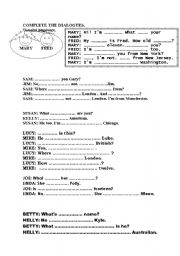
|
Introducing myself and my friends
Simple dialogue gapfill.
Level: elementary
Age: 9-11
Type: worksheet
Downloads: 45
|
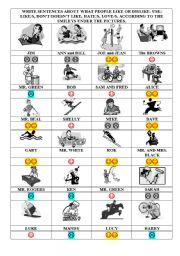
|
Likes and dislikes
The students can practice the structure LIKE (NOT LIKE) + ----ING. It contains a lot of vocabulary for hobbies, all with pictures. I think it can be used for a transparency (for OHP). The instruction on the worksheet says "Write...", but I really think it can be best used for speaking practice.
Level: elementary
Age: 10-12
Type: worksheet
Downloads: 97
|
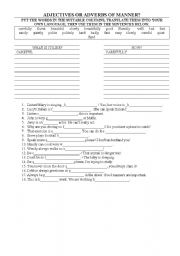
|
Adjectives and adverbs of manner
Short exercise on adjectives and adverbs of manner: translate them and use them in the sentences (gapfill).
Level: elementary
Age: 11-12
Type: worksheet
Downloads: 40
|
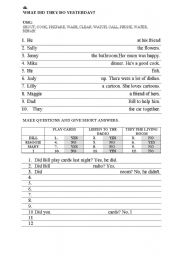
|
Past simple
Past simple - gapfill with a wordbank, questions with short answers, regular verbs only + have and be;
Level: elementary
Age: 11-12
Type: worksheet
Downloads: 11
|
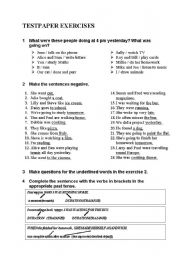
|
Past simple&continuos
Past simple and continuous - positive, negative, combined, questions...
Level: elementary
Age: 12-14
Type: worksheet
Downloads: 330
|
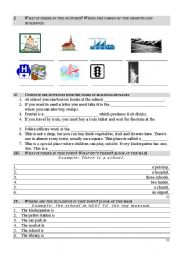
|
In Town
Places in town, asking the way, there is/are, prepositions of place, adjectives, related to countries and nationalities;
Level: elementary
Age: 11-12
Type: worksheet
Downloads: 36
|
|

Present perfect 4
The fourth out of four presentations that make a complete lesson and should be used together.
Level: elementary
Age: 12-14
Downloads: 48
|
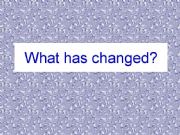
Present perfect 2
The second of four presentations that make a lesson on the form and one of the meanings of present perfect.
Level: elementary
Age: 12-17
Downloads: 74
|
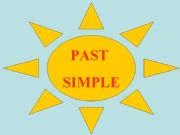
Past simple - regular verbs + have + be
Meant to help you revise some grammar (past simple) with your students.
Level: elementary
Age: 10-14
Downloads: 42
|
|
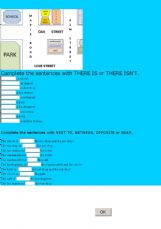
IN TOWN
Places in town, prepositions of place, there is/isn�t.
Level: elementary
Age: 8-11
|
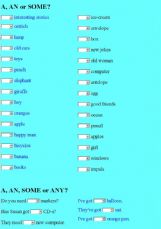
A, AN, SOME, ANY
A, AN, SOME or ANY? Quite basic.
Level: elementary
Age: 10-12
|
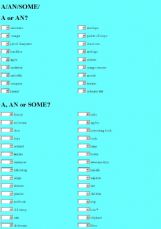
A/AN/SOME
A/AN and SOME - very basic
Level: elementary
Age: 10-11
|
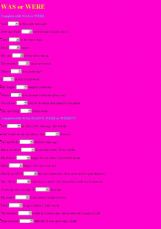
WAS/WERE
BE in the past simple: WAS/WERE/WASN�T/WEREN�T
Level: elementary
Age: 10-14
|
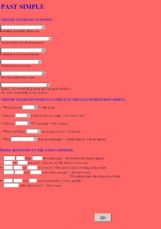
QUESTIONS IN PAST SIMPLE
Questions in the past simple - regular verbs only.
Level: elementary
Age: 10-12
|
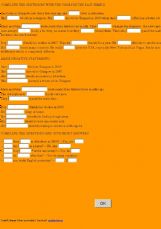
PAST SIMPLE - regular verbs
Regular verbs of past simple - positive, negative, questions
Level: elementary
Age: 10-14
|
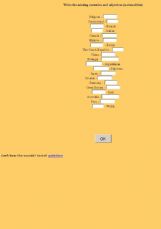
Countries and nationalities
omplete the list with the appropriate adjectives and countries.
Level: elementary
Age: 10-14
|
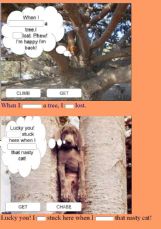
What happened while
This was made after a ppt of mine on ESLPRINTABLES. After showing them the ppt, you can check the students� knowledge on past simple and past continuous and how much atttenntion they paid during the lesson. Funny. Enjoy!
Level: elementary
Age: 12-100
|
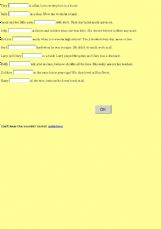
Used to
Used to
Level: elementary
Age: 12-100
|
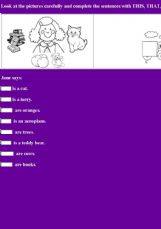
THIS/THAT/THESE/THOSE
Some objects are near, others a bit further away. The difference is just big enough to tell ones from the others. Type in the suitable demonstratives and check your answers.
Level: elementary
Age: 8-12
|
|